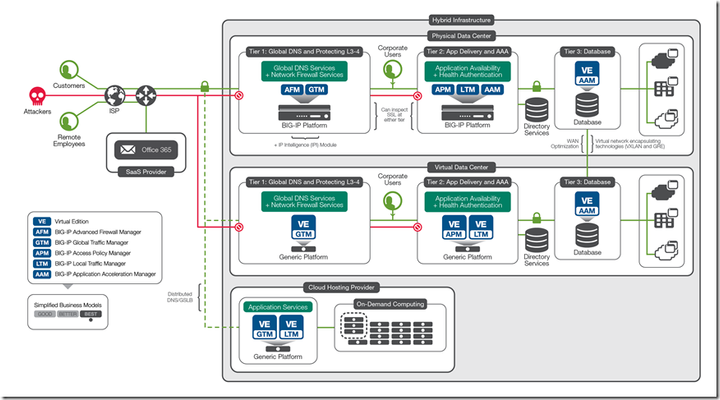Don’t Take the Impostor’s Bait
Phishing has been around since the dawn of the internet. The term was first used in an AOL Usenet group back in 1996 but it wasn’t until 2003 when many baited hooks and lures started dropping. Popular transaction destinations like PayPal and eBay were some of the early victims of these spoofed sites asking customers to update their personal and credit card information. By 2004, it was a full-fledged ‘get rich quick scheme’ with many financial institutions – and their customers – as targets. Oxford Dictionary defines Phishing as, ‘The fraudulent practice of sending emails purporting to be from reputable companies in order to induce individuals to reveal personal information, such as passwords and credit card numbers.’ You’ve seen it, the almost perfect looking email with actual logos, images and links to a reputable company only to have it go to a slick looking replica complete with a login form. If you aren’t paying attention and do enter your credentials, you’ve just given a crook access to your money. The Anti-Phishing Working Group (APWG) reports a 250 percent jump in the number of detected phishing websites between October 2015 and March 2016. More than in any other three-month span since it began tracking back in 2004. That’s around 230,000 unique phishing campaigns a month. And as recent as last week, American Express users were hit with a phishing email offering anti-phishing protection. Go figure. If you clicked the link, you were taken to a bogus Amex login page which asks for all the important stuff: SSN, DoB, mother’s maiden, AMEX number plus security code and a few other vitals. When complete, you’ll be redirected to the authentic site so you think you’ve been there all along. That’s how they work their magic. A very similar domain URL and all the bells of the original, including the real customer service 800 number. You can combat it however. F5’s WebSafe Web Fraud Protection can secure your organization (and your customers) against the evolving online fraud and you do not need any special client to detect it. WebSafe inserts an obfuscated JavaScript code which can detect malware like bait, mandatory words or if the fake was loaded from a different domain. It can validate source integrity like comparing fields for multiple users and detect threats like automatic transactions. Alerts are sent to an on premise dashboard and can also be forwarded to F5’s Security Operations Center (SOC). If you are configuring malware protection for the login and transaction pages for a financial application, it’s as simple as adding an Anti-Fraud profile to your VIP. First, you create an anti-fraud profile: Then indicate which URL should be watched and the action: Then enable Phishing detection: And when a phishing attach occurs, both the domain and the username of the victim get reported to the dashboard: The code that’s inserted is a little piece of JavaScript added to your website to detect the malicious activity. No action is needed on the part of the user since everything is handled within BIG-IP. This tiny piece of code will dramatically reduce fraud loss and retain the most important asset in business—customer confidence. Don't get fooled by a faker. ps Related: Security Sidebar: Spear Phishing Still Happens…A Personal Story Phishing you say, well that’s not my problem Getting Started with WebSafe Phishing Activity Trends Report (pdf)421Views0likes1CommentCollaborate in the Cloud
Employee collaboration and access to communication tools are essential for workplace productivity. Organizations are increasing their use of Microsoft Office 365, a subscription-based service that provides hosted versions of familiar Microsoft applications. Most businesses choose Exchange Online as the first app in Office 365 they adopt. The challenge with any SaaS application such as Office 365 is that user authentication is usually handled by the application itself, so user credentials are typically stored and managed in the cloud by the provider. The challenge for IT is to properly authenticate the employee (whether located inside or outside the corporate network) to a highly available identity provider (such as Active Directory). Authentication without complexity Even though Office 365 runs in a Microsoft-hosted cloud environment, user authentication and authorization are often accomplished by federating on premises Active Directory with Office 365. Organizations subscribing to Office 365 may deploy Active Directory Federation Services (ADFS) on premises, which then authenticates users against Active Directory. Deploying ADFS typically required organizations to deploy, manage, and maintain additional servers onsite, which can complicate or further clutter the infrastructure with more hardware. SAML (security assertion markup language) is often the enabler to identify and authenticate the user. It then directs the user to the appropriate Office 365 service location to access resources. SAML-enabled applications work by accepting user authentication from a trusted third party—an identity provider. In the case of Office 365, the BIG-IP platform acts as the identity provider. For example, when a user requests his or her OWA email URL via a browser using Office 365, that user is redirected to a BIG-IP logon page to validate the request. The BIG-IP system authenticates the user on behalf of Office 365 and then grants access. The Office 365 environment will recognize the individual and provide their unique Office 365 OWA email environment. The BIG-IP platform provides a seamless experience for Office 365 users and with the federated identity that the BIG-IP platform enables, the IT team is able to extend SSO capabilities to other applications. The benefit of using the BIG-IP platform to support Office 365 with SAML is that organizations can reduce the complexity and requirements of deploying ADFS. By default, when enabling Office 365, administrators need to authenticate those users in the cloud. If an IT administrator wants to use the corporate authentication mechanism, ADFS must be put into the corporate infrastructure. With the BIG-IP platform, organizations can support authentication to Office 365 and the ADFS requirement disappears, resulting in centralized access control with improved security. Secure collaboration Because email is a mission-critical application for most organizations, it is typically deployed on premises. Organizations using BIG-IP-enhanced Microsoft Exchange Server and Outlook can make it easier for people to collaborate regardless of their location. For example, if a company wanted to launch a product in Europe that had been successfully launched in the United States, it needs workers and contractors in both locations to be able to communicate and share information. In the past, employees may have emailed plain-text files to each other as attachments or posted them online using a web-based file hosting service. This can create security concerns since potentially confidential information is leaving the organization and being stored on the Internet without any protection or encryption. There are also concerns about ease of use for employees and how the lack of an efficient collaboration tool negatively impacts productivity. Internal and external availability 24/7 To solve these issues, many organizations move from the locally managed Exchange Server deployment to Microsoft Office 365. Office 365 makes it easier for employees to work together no matter where they are in the world. Employees connect to Office 365 using only a browser, and they don’t have to remember multiple usernames and passwords to access email, SharePoint, or other internal-only applications and file shares. In this scenario, an organization would deploy the BIG-IP platform in both the primary and secondary data centers. BIG-IP LTM intelligently manages all traffic across the servers. One pair of BIG-IP devices sits in front of the servers in the core network; another pair sits in front of the directory servers in the perimeter network. By managing traffic to and from both the primary and directory servers, the F5 devices ensure availability of Office 365—for both internal and external (federated) users. Ensuring global access To provide for global application performance and disaster recovery, organizations should also deploy BIG-IP GTM devices in the perimeter network at each data center. BIG-IP GTM scales and secures the DNS infrastructure, provides high-speed DNS query responses, and also reroutes traffic when necessary to the most available application server. Should an organization’s primary data center ever fail, BIG-IP GTM would automatically reroute all traffic to the backup data center. BIG-IP GTM can also load balance the directory servers across data centers to provide cross-site resiliency. The BIG-IP platform provides the federated identity services and application availability to allow organizations to make a quick migration to Office 365, ensuring users worldwide will always have reliable access to email, corporate applications, and data. ps Related: Leveraging BIG-IP APM for seamless client NTLM Authentication Enabling SharePoint 2013 Hybrid Search with the BIG-IP (SCRATCH THAT! Big-IP and SAML) with Office 365 Technorati Tags: office 365,o365,big-ip,owa,exchange,employee,collaborate,email,saml,adfs,silva,saas,cloud Connect with Peter: Connect with F5:324Views0likes0Comments

